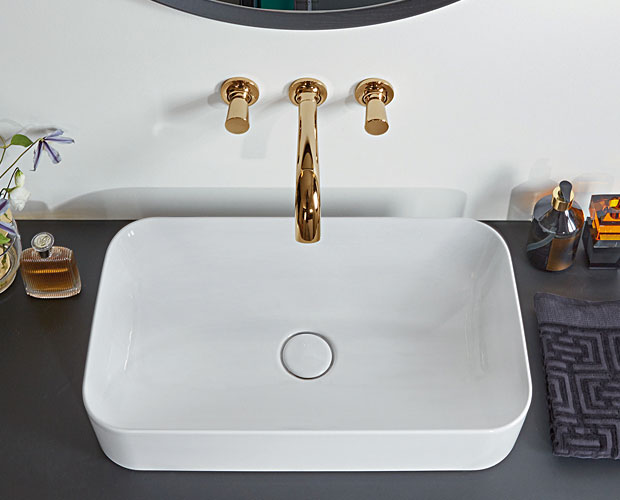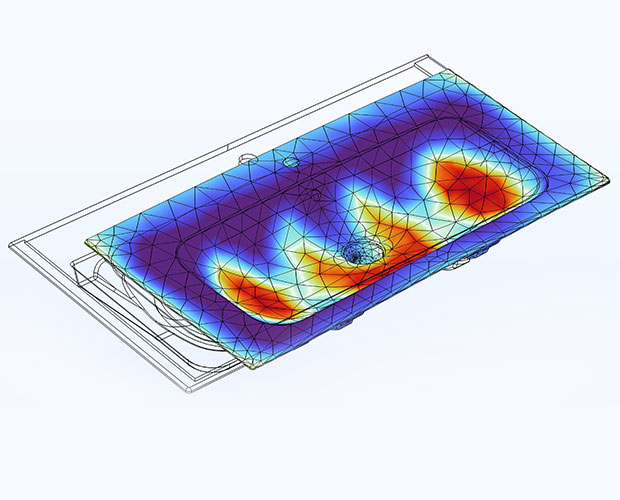Fraunhofer ISC and its Center for High Temperature Materials and Design are working on energy-efficient processes as well as regenerative forms of energy conversion, for example to generate electricity. You can read about how this works on a small and large scale, for example, in the article on the EU project Symphony, in which autonomous sensors with a self-sufficient energy supply are used for various specific applications. Or, for example, in the report on PeroTec, which deals with new efficient solar cells and the optimized production of large ceramic products.
Project examples on the subject of energy
Examples from current research
Project "PeroTec"
"PeroTec": highly efficient, resource-saving perovskite solar cells
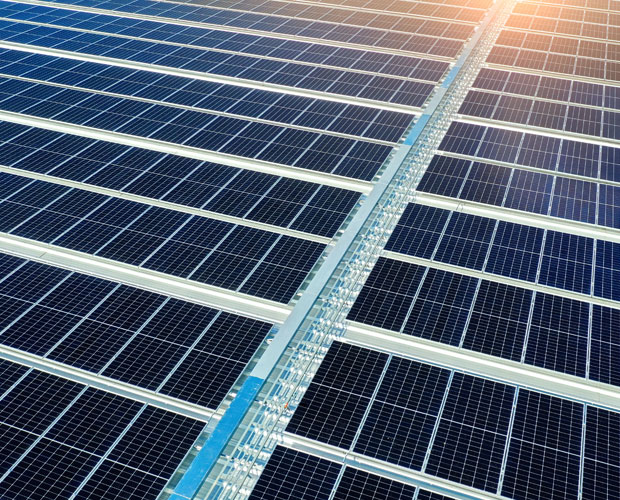
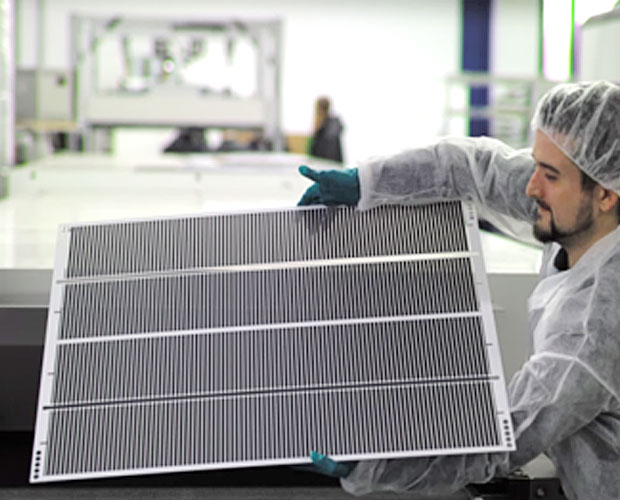
The vulnerability of global supply chains, as demonstrated by the Corona pandemic and the war in Ukraine, highlights the need for energy transition. As the shift from conventional to renewable energy increases, so does interest in sustainable energy sources. The photovoltaics industry in particular is feeling the effects of growing demand from end consumers. The modules required for photovoltaic energy consist of silicon solar cells, which are primarily produced in East Asia. As a result, long and polluting transport routes not only have a negative impact on the achievement of climate policy goals, but also create dependence on suppliers.
The PeroTec project coordinated by the IWM, ISE and ISC Fraunhofer Institutes provides a future-oriented alternative – switching from silicon solar cells to perovskite solar cells.
Perovskite solar cells: supporting climate policy goals through sustainable and local production
The production of silicon solar cells in East Asia generates a carbon footprint of over 60g/kWh CO2-eq, which is around 10 times the amount that the production of perovskite solar cells in Germany or Europe would create. The pathway to a more sustainable production of photovoltaic modules would, therefore, involve relocating production to Europe. The necessary technology and processes such as laser structuring, vacuum coating and screen printing have already been established and provide the basis for setting up efficient production processes for PeroTec modules in Europe.
The PeroTec solar cell is created directly on glass by means of reverse manufacturing. Empty modules are produced from structured, printed, and vacuum-coated flat glass panels that provide sufficient space in between for the perovskite absorber.
The photoactive perovskite salt is introduced into the empty module and then activated in situ through crystallization. Glass solders, developed under the guidance of Fraunhofer ISC, are then used for the gas-tight sealing of the perovskite modules.
Fraunhofer ISC provides expertise for glass solder development
For the development of the glass solders necessary for the PeroTec project, Fraunhofer ISC was asked to provide its expertise. The ISC is now working on the development of the gas-tight sealing process for the flat glass panes of the perovskite solar modules. As the base material for the flat glass pane, both soda-lime glass and borosilicate glass can be used. The type of glass that is used determines the requirements for the glass solder, which is adapted to the expansion coefficient of the base material and applied by screen printing.
The PeroTec projects allows the IWM, ISE and ISC Fraunhofer Institutes to address various areas that are not only important for sustainable, resource-conserving production, but that also strengthen local industry in Germany and Europe.
Project "HTPgeox"
"HTPgeox": energy efficient high temperature processes for large and geometrically complex components
Within the scope of the HTPgeox project, the HTL is working with three industrial partners to develop digital technology to help achieve significantly higher energy and material efficiency in the kiln processes required for manufacturing large and geometrically complex ceramic components.
One example of such components are the sanitation ceramics from Villery & Boch AG. Market requirements, particularly in terms of design and functionality, often mean that, nowadays, there is an expectation for washbasins and similar components to have increasingly unique shapes, to be particularly thin-walled, and to have narrow dimensional tolerances that allow them to fit perfectly into built-in units. This means that even slight variations in the final shape, that may occur due to inadequate process control during the firing process, result in increased production scrap and thus a waste of energy and raw materials.
To prevent this, HTPgeox is working on extensively digitalizing the heat treatment process in the tunnel kiln with the aim of optimizing process control. The project’s industrial partners, which, in addition to Villeroy & Boch AG, also include Keramischer OFENBAU GmbH and Meprovision GmbH & Co. KG, are setting up a comprehensive monitoring system for kiln and product data that can be used to track individual product’s kiln history. This involves an initial automatic visual recording of the positioning of each product on the kiln car and then matching the corresponding local sensor data as the product travels through the 120-meter-long kiln. Machine learning algorithms then use this data to determine correlations between component defects and kiln issues. This information can be used to correct some of the faults caused by kiln car loading and inadequate kiln control, even without the need for further analysis.
The HTL’s role is to provide this further analysis in two stages. The shortest and most energy-efficient firing process can be determined and developed by using tested methodology to carry out predicative simulation of material and component behavior during the thermal process. For this purpose, the process kinetics of several ceramic masses are determined in situ using measurements taken at the HTL TOM facilities and at other sites. Using the same data, damage to the sanitation component discovered at a later stage can then be analyzed using detailed modelling of the actual thermal situation of the component in the kiln in its specific positioning on the kiln car. If, for example, a crack in a toilet bowl has been caused by an excessive temperature curve, the computer is able to determine whether this crack can be clearly traced back to the positioning of the bowl on the kiln car. The knowledge base that results from this analysis will then be translated into concrete guidelines for kiln car loading operators. In the long term, the findings produced by the ongoing kiln and product data monitoring and the accompanying simulations will be combined to form a predictive kiln control system with actively planned and optimized kiln car loading.
In the short term, the implementation of this developed technology is expected to reduce the amount of energy for heating that is required during production by up to 20%, whilst at the same time significantly improving raw material efficiency by avoiding rejects. Digital process control will also facilitate the future shift from natural gas to hydrogen for kiln firing.
Project "Symphony"
"SYMPHONY": generating autonomous energy on a small scale
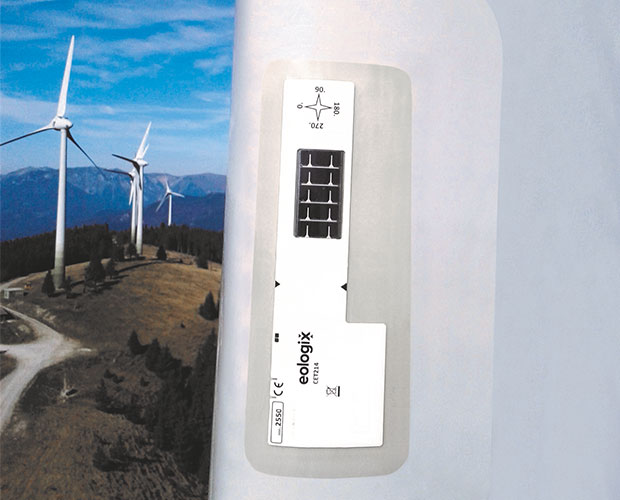
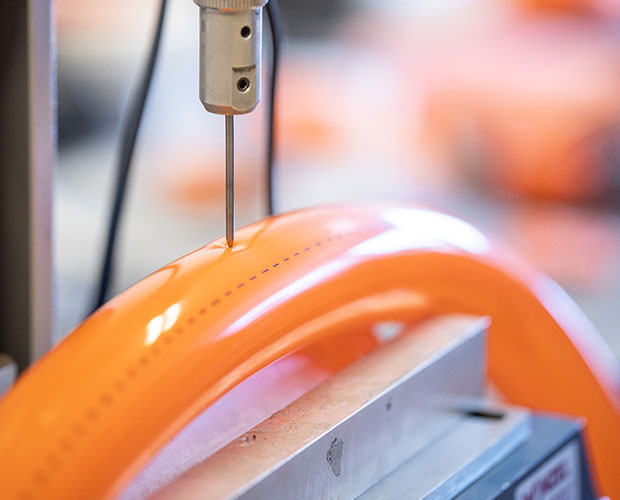

Increasing digitalization has meant that electronic systems are becoming more widespread in all areas of life and even in remote locations. As a result, we need to review power generation processes. Current IoT scenarios predict that around 75 billion connected devices will be brought into existence by 2025 and the use of batteries to power these will result in a significant amount of potentially hazardous waste.
The EU-funded SYMPHONY (Smart Hybrid Multimodal Printed Harvesting of Energy) project consortium aims to develop cost-effective and scalable methods for printing energy harvesting materials on flexible films and to integrate these within energy-efficient electronic and sensor technology. 13 partners and more than 80 researchers are working together under the SYMPHONY umbrella to develop an innovative, cost-effective, and sustainable energy harvesting solution. This solution will be applicable to a wide range of other IoT-based applications, and companies in industries such as the automotive, logistics, railroad, and small appliance industries have already expressed an interest in the solution.
Fraunhofer ISC is contributing to this project by means of its expertise in developing functional, printable, and stretchable materials such as ORMOCER®, special silicones, piezoelectric materials, and magnetic nanoparticles as well as by means of its process engineering know-how for manufacturing and processing. The approach adopted by the SYMPHONY project uses spatially distributed and disordered energy sources for the development of an innovative autonomous energy sensor system.
Whereas thermoelectric and solar-powered generators are dependent on certain environmental factors (such as differences in temperature and the availability of sunlight), electrodynamic and piezoelectric energy converters can use vibrations and deformations which are practically omnipresent to generate the required energy. The energy supply in this system will be composed entirely of printed, recyclable, and nontoxic materials, including the ferroelectric polymer P(VDF-TrFE), printable and silicon-based rectifiers, redox polymer batteries, and cellulose-based supercaps.
The combination of autonomous energy harvesters and sensors is being tested in three use cases: real-time condition monitoring of wind turbines, smart floors for controlling room heating/cooling, and inner bicycle tubes with integrated pressure control for demanding applications.
An important aspect of this project is defining a suitable methodology for life cycle assessment and for identifying environmental hotspots that could contribute to the development of sustainable SYMPHONY solutions.
The energy-efficient and scalable printing process that the SYMPHONY project is using provides significant cost and energy savings compared to the high temperature processes required for piezoceramics manufacturing. In addition, the materials used in the project (cellulose, polymer batteries, and lead-free piezoelectric materials) have a significantly lower environmental impact.
